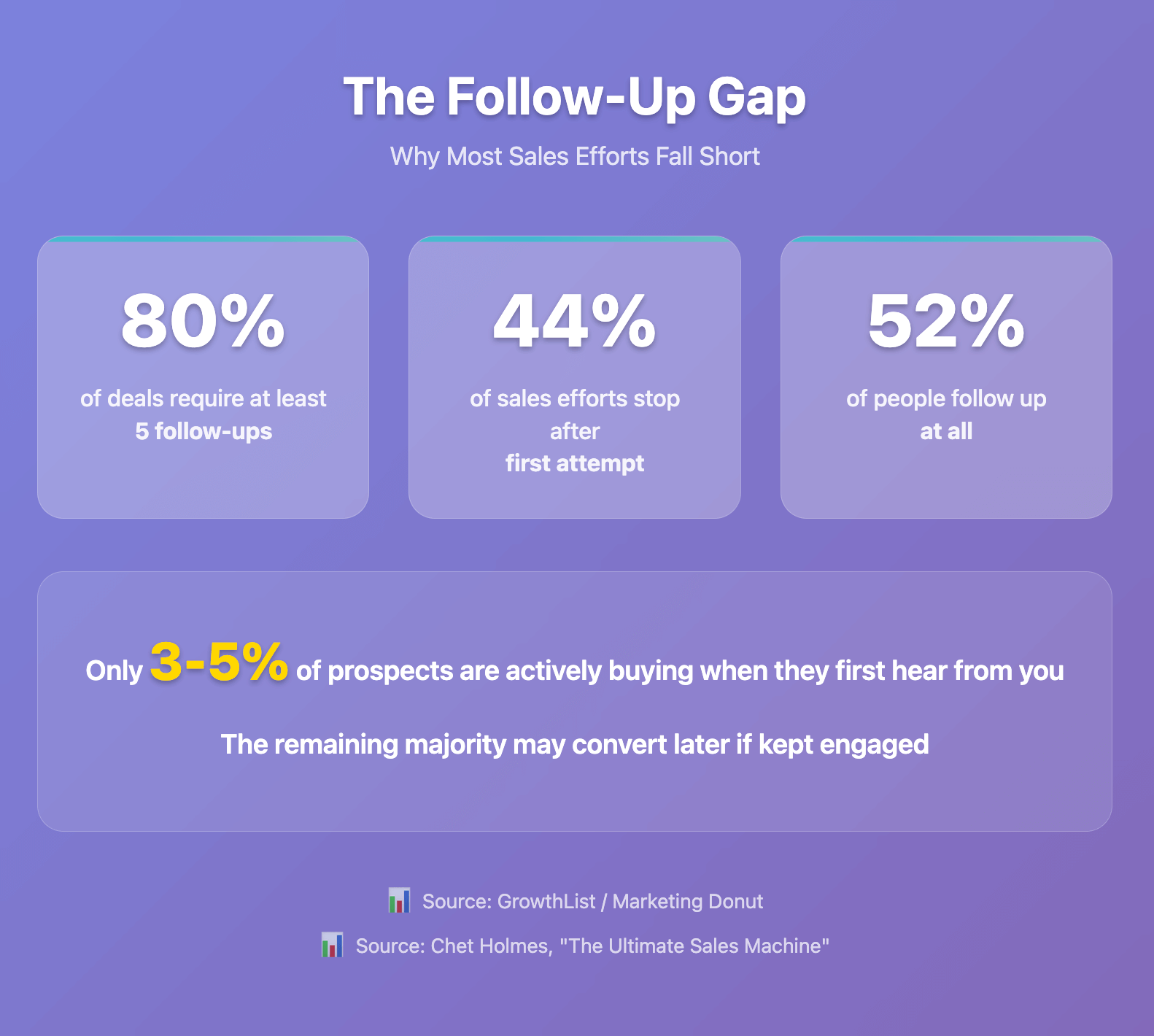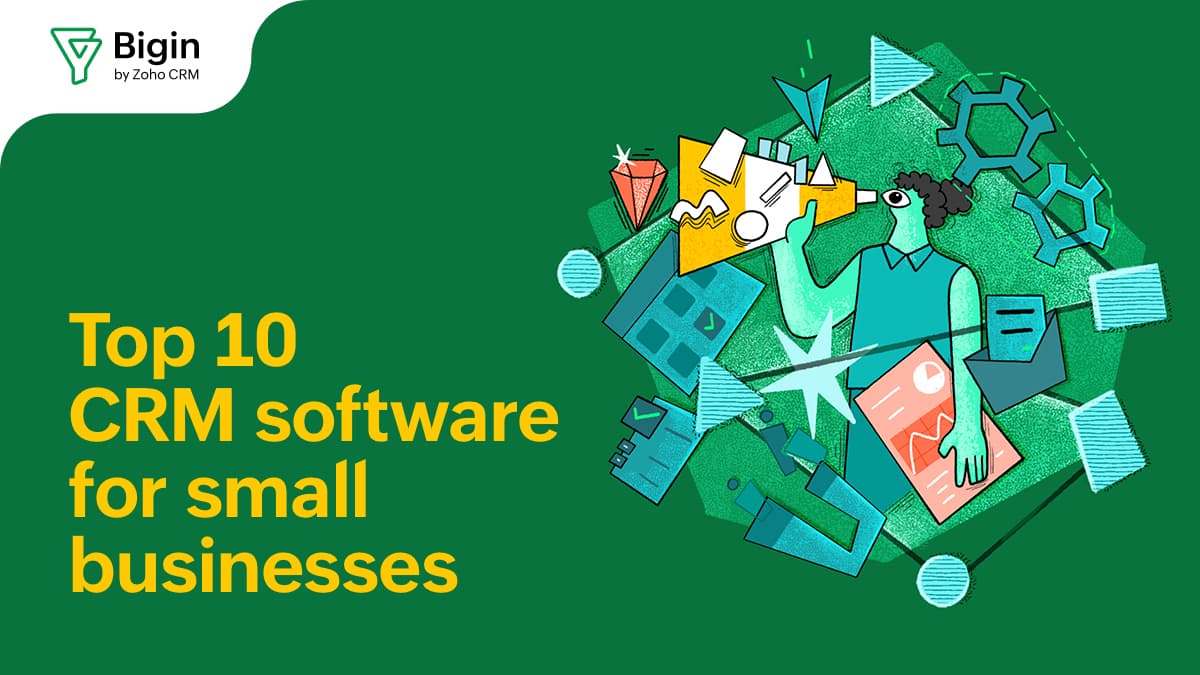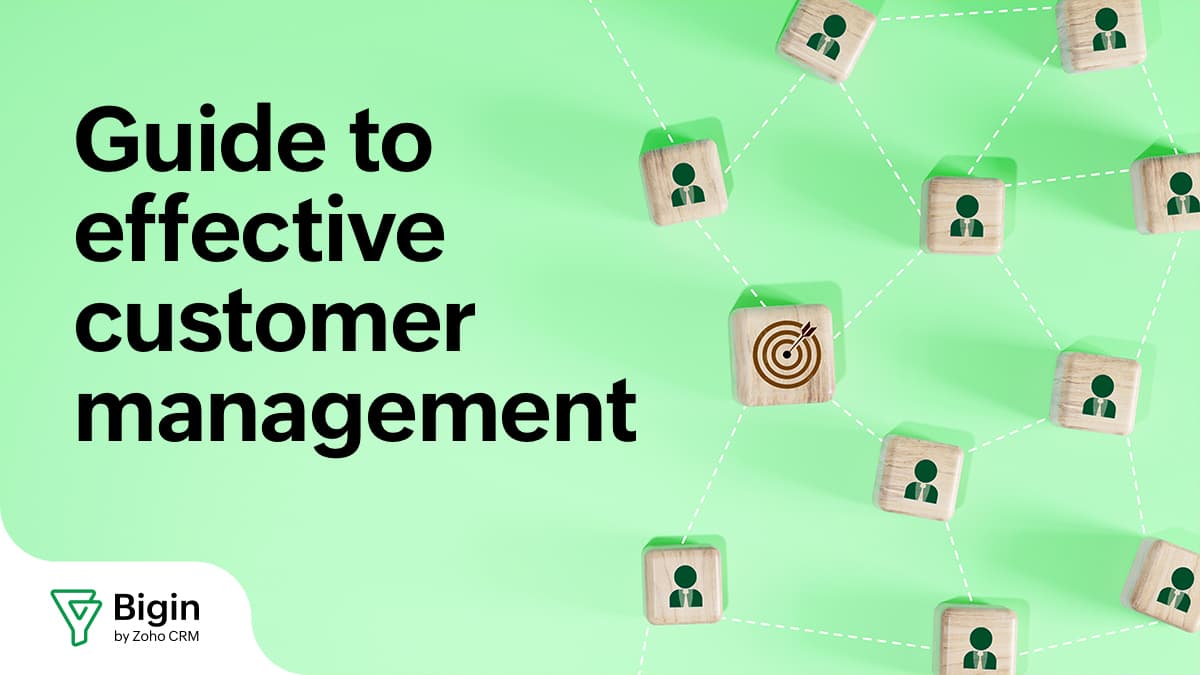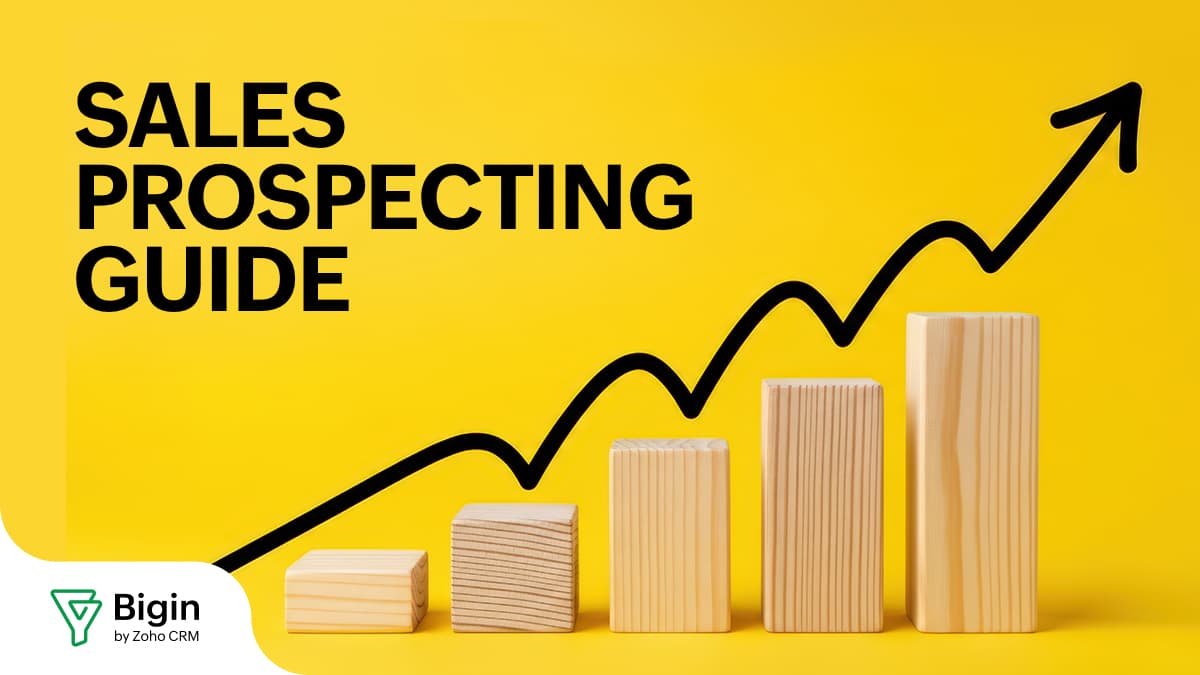5 secrets for effective sales pipeline management for small business owners
- Published : July 16, 2025
- Last Updated : July 16, 2025
- 245 Views
- 7 Min Read

Earlier this year, I spoke to a room full of small business owners at the Entrepreneurs Collective in London. Some were just getting their first customers; others were managing growing teams and expanding markets. What united them was a shared challenge: how to create a smoother, more reliable sales pipeline.
To understand where they stood, I asked how many felt their sales process wasn't working as well as it could. The response was immediate; nearly everyone raised a hand. It was clear that even the most capable business owners felt friction when it came to managing leads, following up, and closing deals.
That experience is common. Small business owners juggle multiple responsibilities: operations, marketing, customer service, and sales—often all in the same day. With so many demands, sales systems tend to form reactively. Data gets scattered. Follow-ups get missed. Messaging loses clarity. Pipelines become difficult to track and even harder to predict.
This article is a deeper version of that talk. It outlines five actionable strategies that can help small business owners reduce friction, improve conversions, and build sales systems that are structured and sustainable.
These are the same principles used by thousands of businesses running on Bigin by Zoho CRM. They're practical, repeatable, and designed for small teams.
Secret 1: Personalize before you prioritize
Many small business owners start with volume-based outreach: send more emails, contact more leads, and hope that someone responds. But this approach rarely delivers consistent results. When messages are generic, recipients ignore them.
Research-backed outreach performs better.

Personalization is all about understanding the recipient's role, recent business activity, and specific context.
Effective research includes:
Reviewing their LinkedIn posts
Checking for company updates or funding announcements
Watching recent interviews or webinars they've been in
Reading blog content or thought leadership articles
Observing social media activity for professional interests
These kinds of insights help you write short, relevant outreach messages that explain:
Why you contacted them
How your product or service aligns with their needs
What action they can take next
For small teams, AI tools can make this process even faster. For example:
ChatGPT, Claude – Draft personal emails
Copy.ai, Writesonic – Format outreach copy
Perplexity – Summarize online profiles
Humanize.ai – Refine tone
Personalized outreach often requires more upfront effort. However, it increases the chances of real engagement and qualified meetings.
How to craft a killer cold email or an opening LinkedIn message
Once you have the context, structure your message like this:
1. Opening hook
Grab attention with something relevant.
Example: "Saw your recent post about hiring a CX lead. Sounds like growth is picking up fast."
2. Personalization that matters
Show you did the homework.
Example: "I also made the shift from consulting into SaaS—so I know that early-stage chaos well."
3. Clear value proposition
Don't explain your product. Explain how it helps.
Example: "We help small business teams onboard new customers three times faster with a visual CRM."
4. Straightforward CTA
Make the ask easy and actionable.
Example: "Would a quick 15-minute chat next week make sense?"
5. Personalized subject line
Use their name, company name, or a specific hook.
Examples:
"Quick note after your GTM Summit panel"
"About your new expansion into Europe"
Secret 2: You're surrounded by warm leads
In early stages, many businesses focus on new lead generation. But some of the best opportunities are already within reach. These include previous users, existing customers, and trusted networks.
There are four categories of warm leads that are often overlooked:
1. Past trial users
Users who signed up but didn't convert once had interest. The challenge is re-engaging them thoughtfully.
Approaches include:
Sending a short survey asking what held them back
Offering a time-limited incentive
Sharing a new feature update
Recording a quick Loom video showing recent improvements
Tools like Zoho PageSense or Hotjar can help you identify where users dropped off or what content they engaged with.
2. Customer referrals
Happy customers are strong sources of leads. Referral leads tend to convert faster and stay longer.
📊 Referral leads convert 30% better and have 16% higher lifetime values
Source: Wharton / Harvard Business Review
It helps to ask for customer referrals in a structured way:
Provide a simple referral message they can forward.
Offer a benefit to both parties (e.g., discounts, credits).
Recognize referrals publicly or feature the customer in your content.
Creating a referral loop turns satisfaction into growth.
3. Non-competing businesses with shared audiences
If another product or service targets the same type of customer but solves a different problem, there's room for partnership.
Ideas include:
Hosting a joint webinar
Writing a co-branded newsletter or article
Swapping blog posts
Bundling services together for a limited offer
These efforts extend your reach without increasing marketing spend.
4. Investor or community networks
If you're part of an investor-backed network or professional group, those contacts often include businesses similar to yours. These are often high-fit prospects.
It helps to:
Create a dedicated one-pager for network members.
Offer something exclusive for introductions.
Ask investors or partners for a shortlist of companies worth approaching.
Moreover, leads that come from trusted networks usually convert faster and with less resistance.
Secret 3: Follow-up discipline makes the difference
A lot of deals don't close on the first conversation. The reason isn't disinterest; it's timing, budget, or internal delays. Yet many opportunities are lost because the follow-up is inconsistent or forgotten.

Effective follow-up strategies include:
Blocking time weekly for pipeline check-ins
Creating light-touch email templates for different stages
Setting reminders inside your CRM
Referencing relevant updates (e.g., "Saw your new product launch…")
Using micro-asks like "Should I check back next quarter?" or "Is someone else better suited for this discussion?"
Additionally, switching formats and sending a LinkedIn message, voice note, or a short video can help reset the conversation and encourage a response.
Follow-ups work best when they feel helpful, not persistent.
Secret 4: A weak value proposition slows everything down
Even with strong outreach and consistent follow-up, conversion will suffer if the message is unclear. Buyers need to understand what you do and how it helps them quickly. Here are a couple of stats for you:
📊 Clear value propositions can improve conversions by 2-3x. (Leads at Scale)

📊 75% of buyers describe vendor messaging as confusing or filled with jargon. (TrustRadius Software Buyer Poll, 2018)
These stats paint a grim picture. But that's okay. There are some easy ways to start writing clearer messages.
To improve clarity:
Eliminate jargon.
Make every sentence answer: What's the benefit for the buyer?
Focus on outcomes like saving time, reducing costs, or simplifying a task.
Use short case studies to show the impact on similar businesses.
One way to test your message is the "So what?" method; if a sentence doesn't explain why it matters, it needs revision.
Example:
❌ We provide intelligent automation for SMBs.
✅ We help small businesses send invoices three times faster and get paid on time.
Specific benefits are easier to understand and more persuasive.
Secret 5: Disconnected tools create gaps you can't see
Small businesses often rely on several tools to manage sales: spreadsheets for tracking, inboxes for communication, calendars for meetings, and cloud drives for documents. This setup creates inefficiencies.
📊 Employees spend 30% of their week searching for data across tools. (CloudTalk / McKinsey Global Institute)
Scattered data leads to missed follow-ups, incomplete records, and poor visibility into deal progress. It also makes collaboration harder.
A connected system is essential, and that's where a CRM makes a measurable difference.
A good CRM provides:
One view of the entire pipeline
Customer interaction histories
Task assignments and reminders
Built-in communication tools (email, phone, WhatsApp)
Dashboard reports
Easy automation for routine tasks
Bigin by Zoho CRM is designed for small business teams that want these capabilities without complexity or high costs. Bigin includes:
Drag-and-drop pipelines
Daily task management
Multichannel messaging
Custom dashboards
£5/user/month pricing
Setup in under 30 minutes
A mobile-first design
For small businesses, Bigin helps eliminate manual errors and brings clarity to daily sales operations. As your business grows, Bigin scales into Zoho CRM for deeper functionality.
Final thoughts
Sales processes break when they aren't structured, but improving your pipeline doesn't require dramatic change. Often, it starts with five practical adjustments:
Personalize your outreach.
Tap into existing warm leads.
Build consistent follow-up habits.
Refine your messaging.
Centralize your sales tools.
Each of these strategies strengthens your pipeline and helps reduce effort while improving results.
Most pipeline issues aren't caused by a lack of effort; they're the result of scattered processes, unclear messaging, and inconsistent follow-up. When these challenges compound, they lead to unpredictable revenue and wasted time.
But small changes can drive meaningful impact. Personalized outreach leads to better conversations. Re-activating warm leads reduces acquisition cost. Structured follow-ups build trust. Clear messaging increases win rates. And having a single system to manage all of this makes it repeatable.
If you're looking to put these principles into action, having the right infrastructure matters. That's exactly why we built Bigin, a CRM designed specifically for small businesses that want to simplify their sales process without sacrificing power.
It brings your contacts, emails, calls, follow-ups, deal tracking, reports, and automations into one clean interface, so nothing slips through the cracks.
Whether you're just starting to build your pipeline or you're looking to make it stronger, Bigin gives you the structure to scale with confidence. Learn more at bigin.com.
FAQs
What is sales pipeline management?
Sales pipeline management is the process of tracking prospects as they move through your sales funnel from initial contact to closed deal. It involves organizing leads by stage, monitoring progress, and optimizing conversion rates to improve sales efficiency and revenue predictability.
What is pipeline management in sales?
Pipeline management in sales is the strategic oversight of your entire sales process, including tracking prospects at each stage, analyzing conversion rates, forecasting revenue, and identifying bottlenecks. It helps sales teams prioritize activities and manage their sales funnel more effectively.
Why is sales pipeline management Important?
Sales pipeline management is essential because it provides visibility into future revenue, improves forecasting accuracy, and helps identify process inefficiencies. It enables better resource allocation, increases team productivity, and gives managers the insights needed to coach their teams and optimize sales performance.
How does on handle sales pipeline management with team collaboration?
Effective team collaboration in pipeline management requires shared CRM dashboards, standardized sales stages, and automated notifications for stage changes. Use integrated communication tools, hold regular pipeline reviews, establish clear handoff procedures, and ensure your CRM includes features like shared calendars, task management, and role-based access controls for seamless teamwork.
 Anubhav
AnubhavAnubhav is a product marketer with an insatiable thirst for all things content marketing, technology, and SaaS. His expertise lies in crafting compelling narratives that resonate with audiences and drive business growth. With a deep-rooted interest in entrepreneurship, Anubhav closely follows the latest industry trends and innovations, constantly seeking new ways to elevate marketing strategies.


